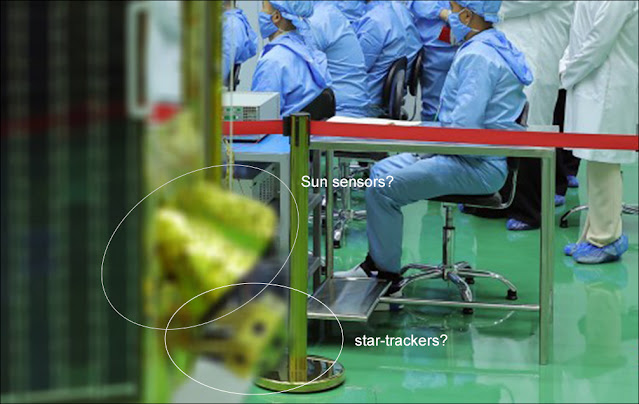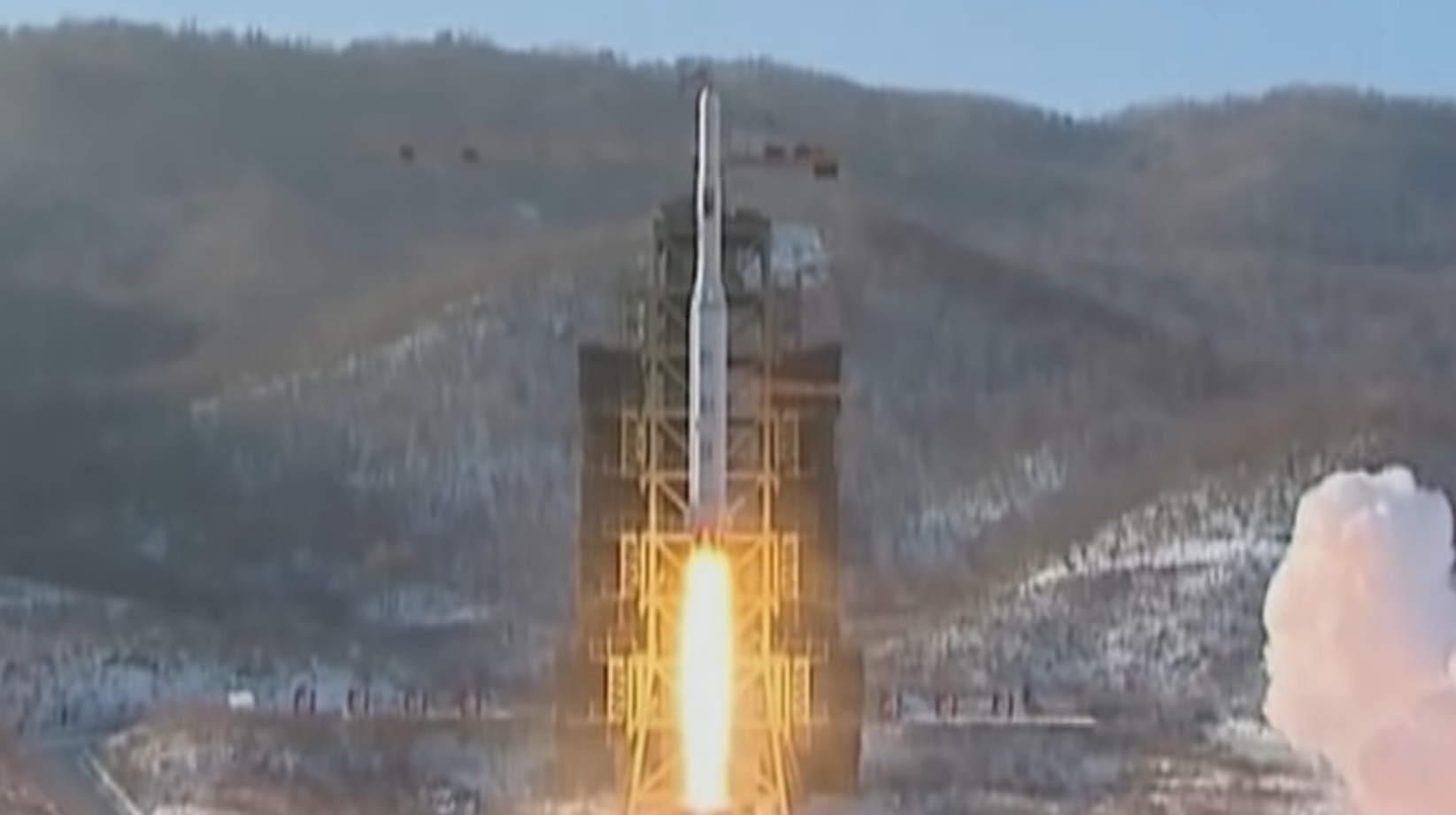Enigmatic North Korea may attempt to put a satellite in orbit, as early as this week.
Update: May 31st – Alas, it was not meant to be. While North Korea’s latest satellite launched last night on the first day of the launch window at 21:29 Universal Time (UT), the rocket seems to have experienced an anomaly on the second stage, and the now posthumously named ‘Cheollima-1’ rocket with the ‘Malligyong-1’ (‘grand view’ (?) in Korean) satellite splashed down in the Sea of Korea. This trajectory would seem to indicate that the mission was indeed aiming for a sun-synchronous orbit.
Satellite spotters worldwide may have a new clandestine target to hunt for in orbit soon. The North Korean government announced possible plans this week to field another satellite into orbit by mid-June. This comes after a public visit by leader Kim Jong Un and his daughter Kim Ju-Ae to a DPRK National Aerospace Development Administration (NADA) aerospace facility earlier this month. Kim “approved the future action plan of the preparatory committee,” according the Korean Central News Agency, and said that the satellite was “an urgent requirement of the prevailing security environment of the country.”

This would suggest the payload in question is a military reconnaissance or spy satellite. Recent Navigational Warnings published alerting Japan and surrounding nations to a launch from the Sohae Space Center site out southward across the Yellow Sea also seem to bear this out. The launch window in the warnings run from May 30th to June 10th.

A Secretive Space Program
North Korea’s past satellite launches and ambitions to join the community of space-faring nations started on September 4th, 1998, with the failed launch of Kwangmyongsong-1. Four attempts later, and North Korea was finally successful in reaching orbit with Kwangmyongsong-3 Unit 2 (a backup spare for Kwangmyongsong-3) on December 12th, 2012. Kwangmyongsong-4 also reached orbit in 2016. If successful, this launch would most likely be designated Kwangmyongsong-5.
‘Kwangmyongsong’ means ‘bright star’ in Korean, alluding to a reference in a poem written by the late North Korean leader Kim Il Sung. In the past, North Korea used a 3-stage Unha rocket to reach orbit.

This comes after South Korea’s successful launch from the Naro Space Center last week, with the 3-stage Nuri/KSLV-2 rocket and the commercial NEXTSat-2 mission, so there’s probably more than a little ‘space race redux’ going on between the two rival nations on the peninsula.
Spying on Spysats
The warnings suggest two possible launch trajectories. One would see the satellite head into a 78 degree orbital inclination, while a second would head into a more complex ‘polar’ sun-synchronous orbit. This requires more fuel to reach and an additional ‘dogleg’ maneuver to attain. Sun-synchronous orbit allows for multiple imaging passes of a site with the same shadow angle, ideal for Earth-observing (and military reconnaissance) satellites.
“There is a lot unclear still,” Satellite tracker Dr. Marco Langbroek told Universe Today. “I think both insertion into a 97.2 degree inclined ~500 km Sun-synchronous orbit, or a ~78 degree non-synchronous orbit are possible. There is some expectation of something ‘new,’ as N-Korea has alluded to that.”

Langbroek also notes that the Sun-synchronous path would also send the launch right over Taiwan immediately after launch, a risky move considering the current political climate. A traditional west-east inclination path could, however, allow the Hermit Kingdom to put something more substantial into orbit.
Watching the (Clandestine) Skies
Sleuthing out spysats in orbit is always fun to do, and is an important service carried out by satellite watchers worldwide. Often, backyard observers are the first to confirm or refute claims when classified missions are in orbit. Though U.S. Space Command’s Combined Space Operations Center (CSpOC) Space-Track (the central clearing house for assigning tracking IDs and orbital elements post launch) generally doesn’t post information on classified payloads fielded by the U.S. and allied states, it’ll most likely post elements for any North Korean launch placed in orbit.
Heavens-Above still lists Kwangmyongsong-3 Unit 2 on their front page as COSPAR ID 2012-072A. If the satellite is tiny (like previous attempts, which were only about +7th magnitude at their brightest) it may well fall below naked eye visibility; your best chance then is to note when it passes near a bright star (Heavens-Above can chart local passes versus star-fields) sit back and watch the assigned field with binoculars, and wait for the satellite to pass by.
We’ll note on Mastodon and Twitter if the launch occurs, and post sighting opportunities worldwide as the hunt for the satellite in Low-Earth Orbit unfolds.
Read Dr. Marco Langbroek’s ongoing analysis of the possible upcoming North Korean satellite launch here.

